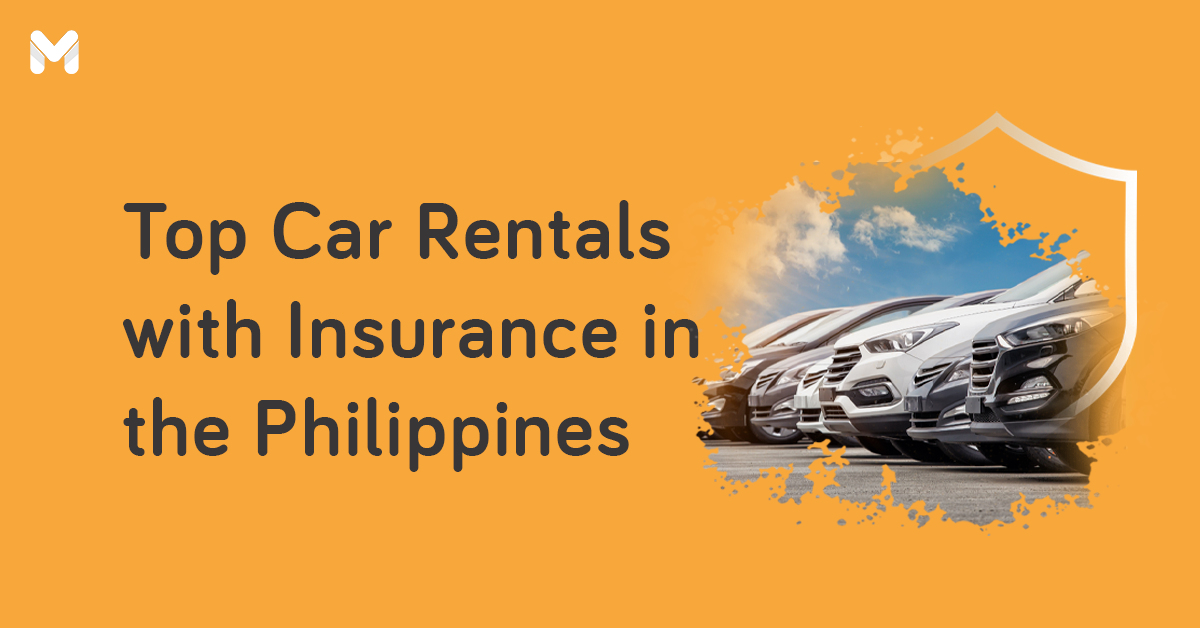Owning a car entails a lot of financial responsibilities. Aside from the car itself, you'll be paying for things like registration, maintenance, and insurance.
However, many Filipinos choose to forgo the latter, thinking that being careful is enough. Newsflash—it's not.
Before you can even drive your car, you need to buy a particular type of car insurance called TPL insurance. What is it and why is it necessary for owning a vehicle in the Philippines?
Let's answer that in this guide.
What is TPL Insurance?
TPL is a basic car insurance that every car owner in the Philippines should get. TPL stands for third-party liability.
TPL is also referred to as compulsory third-party liability insurance (CTPL) in the Philippines. As the name implies, TPL covers you from liabilities after an accident that injured or killed a third party.
🚗 Is Third-Party Liability Insurance Mandatory?
Yes. TPL car insurance is a requirement for all types of vehicles, from private to commercial vehicles, and even trucks and motorcycles. Motorists are required to purchase TPL insurance in the Philippines before registering their vehicles with the LTO.
🚗 Why is TPL Insurance Required for All Vehicles?
In the Philippines, around 12,000 people die due to road accidents every year.[1] Imagine if all the vehicles involved didn't have insurance.
In a culture where frugality is embedded, important things like car insurance are often neglected. Most Filipinos will always choose the least expensive option, consequences be damned.
That's why the government had to make TPL car insurance mandatory: to force Filipinos to be more responsible on the road.
What is Third-Party Liability?

Third-party liability refers to your liability to the third party involved in the accident. But who exactly is the third party? Is it anyone who got hit by the car? How about the people inside the car?
Below is the TPL definition according to Paragraph (c) of Section 386, Chapter VI of the Insurance Code of the Philippines:[2]
"A third party is any person other than a passenger as defined in this section and shall also exclude a member of the household, or a member of the family within the second degree of consanguinity or affinity, of a motor vehicle owner or land transportation operator, as likewise defined herein, or his employee in respect of death, bodily injury, or damage to property arising out of and in the course of employment."
This means that the third party is any unsuspecting person outside the vehicle who is not a member of the family (which includes your spouse and in-laws) or a household member.
If you accidentally hit a pedestrian, your TPL insurance will pay for the medical expenses of the victim. But if you accidentally hit your caretaker, your TPL will not cover your caretaker's medical expenses, unfortunately.
The Insurance Code also defines a passenger in the same section:
"Passenger is any fare-paying person being transported and conveyed in and by a motor vehicle for transportation of passengers for compensation, including persons expressly authorized by law or by the vehicle's operator or his agents to ride without fare."
Below are some of the usual types of passengers according to their TPL coverage:

What Does TPL Insurance Cover?
-May-18-2023-04-02-53-4863-AM.png?width=629&height=419&name=Pics%20for%20blog%20-%20600x400%20(2)-May-18-2023-04-02-53-4863-AM.png)
TPL insurance coverage in the Philippines includes the medical or funeral expenses of the third party involved in an accident. CTPL insurance coverage in the Philippines assures that the victim and their immediate family will receive financial assistance of up to ₱100,000.[3]
- If an accident leads to the death of a third party, the third party's immediate family will receive ₱70,000 for death indemnity and ₱30,000 for the funeral expenses. A third-party passenger can also get the same amount.
- If an accident leads to the injury of a third party, CTPL insurance in the Philippines can cover hospital accommodations of ₱500 per day for a maximum of 45 days, surgical expenses of up to ₱7,500, and anesthesiologist fees of up to ₱2,500. For medicine, the victim has up to ₱20,000.
- If an accident leads to the permanent dismemberment of a third party, your TPL coverage includes the loss of limbs, hands, fingers, toes, feet, hearing, and sight for both eyes, including total disablement for up to ₱50,000.
Read more: What Inclusions Should You Get With Your Car Insurance?
TPL Insurance vs. Comprehensive Insurance: What is the Difference?
As discussed, TPL insurance is mandatory in the Philippines. It covers you from liability if you get into an accident that injures or kills a third party. Because it's the basic and least expensive type of coverage, it doesn't cover your own bodily injuries or vehicle damage.
Comprehensive car insurance, on the other hand, is not required by law. However, it offers wider coverage—not just for you but for your passengers as well. Some of these include own damage, theft, passenger personal accident, acts of God, roadside assistance, and towing coverage.
"Dahil tila TPL insurance lamang ang nakuha mo para sa inyong kotse at hindi comprehensive insurance kung saan lahat ng uri ng injuries at damages sana ang covered, ang tangi lamang na p'wedeng i-indemnify ay ang pagkamatay, bodily injury, o damage to property na maaaring nagawa mo sa isang third party o pasahero. Ang TPL insurance mo ay hindi maaaring i-cover ang danyos na nangyari sa iyong kotse."
- Atty. Jennifer Jimeno Atienza, "Bisig ng Batas" on PTV Philippines
Between TPL and comprehensive car insurance, which is better? Obviously, you get to protect yourself better with comprehensive car insurance. Since it's more expensive, however, some Filipinos choose to forego this option.
Then again, comprehensive insurance offers more financial protection. It can help you save some money on repair or hospitalization costs—which, depending on the accident, you might not be able to do with a TPL policy.
In conclusion, comprehensive car insurance is ultimately the safest and most cost-effective option.
Note: As per Insurance Commissioner Reynaldo A. Regalado, you don't need to avail of TPL if you already have comprehensive car insurance, since the latter already includes it.[4]
How and Where to Get TPL Insurance in the Philippines
Here are the steps you need to take if you want to buy or renew third-party liability insurance by yourself:
- Prepare the following CTPL insurance documents:
- Your vehicle's Original Receipt and Certificate of Registration
- Your driver's license
- Another valid government-issued ID
- Photocopies of each document listed above
- Choose an LTO-accredited TPL insurance provider and buy your TPL policy from it.
- Upon purchase, you'll receive a policy with conditions together with a Certificate of Cover or COC. Don't forget to make copies of every document you receive.
- Bring these documents to the LTO upon registration to prove that your vehicle has TPL car insurance or TPL motorcycle insurance coverage (if you own a motorcycle).
Note that if you buy a brand-new car, the dealership might offer free CTPL coverage for a certain period. If that's the case, ask your agent if it's bundled in your freebies package.
💻 How to Get CTPL Insurance Online
Wondering if you can apply for a CTPL policy online? Yes, you definitely can! Various insurance providers, including OONA Insurance (formerly MAPFRE), Allied Bankers, and Paramount Life and General Insurance, offer CTPL online.
As for the process, you'll need to fill out a registration form on the insurer's website and pay the premium using your credit or debit card. You'll then receive your policy and Certification of Cover (COC) through the email address provided.
The COC contains details like the name of the assured, the plate number of the vehicle, color, chassis number, and the insurer's limit of liability.
Read more:
- Ford Car Insurance: How Much is the Cheapest Coverage?
- Drive Safe: How Much is the Cheapest Premium for Suzuki Car Insurance?
How Much is TPL Insurance in the Philippines?
Unlike comprehensive car insurance, which generally ranges from ₱10,000 to ₱20,000, TPL insurance is relatively cheaper, with a fixed rate. It can go from around ₱650 (or even lower) to ₱1,500, depending on the type of vehicle.
The Insurance Commission (IC) regulates TPL insurance prices for all insurance companies to ensure that car owners nationwide can afford to insure their vehicles.[5]
| TPL Provider | Premium Starts at | Vehicles Covered |
|
OONA Insurance (formerly MAPFRE)
 |
Starts at ₱290/year | Motorcycles, private cars and SUVs, light/medium/heavy trucks, taxis, PUJs, mini-buses, PUBs, private buses, and tourist buses |
|
Prudential Guarantee
 |
Available upon request from the insurer |
Private cars |
|
Mercantile Insurance
|
Available upon request from the insurer |
Private automobiles, motorhomes, motorcycles, scooters, mobiles, buses, road building equipment, and trailers |
|
SGI Philippines
|
Available upon request from the insurer |
Private cars, motorcycles, and commercial vehicles |
|
Standard Insurance
|
|
Private cars, (including jeeps and AUVs), motorcycles, tricycles, trailers, light/medium trucks, and heavy trucks |
|
Stronghold
|
Available upon request from the insurer |
Private cars, commercial vehicles, and motorcycles |
|
Paramount Life & General Insurance |
Starts at ₱296/year |
Motorcycles, tricycles, trailers, PUBs and tourist buses, taxis, PUJs, light/medium trucks (own goods), heavy trucks (own goods), tourist cars, and private cars (including jeeps and utility vehicles) |
|
Pioneer Group |
Available upon request from the insurer |
Private and commercial vehicles |
|
FPG
|
|
Motorcycles, tricycles, trailers, PUBs and tourist buses, taxis, PUJs, light/medium trucks (own goods), heavy trucks (own goods), tourist cars, and private cars (including jeeps and utility vehicles) |
|
Malayan Insurance  |
Available upon request from the insurer |
Private and commercial vehicles |
Related:
- How Much Does Car Insurance Cost in the Philippines in 2024?
- How to Save Money on Car Insurance: Lower Your Rates the Smart Way
How to File a Claim for TPL Insurance in the Philippines
-May-18-2023-04-01-11-4280-AM.png?width=617&height=411&name=Pics%20for%20blog%20-%20600x400%20(1)-May-18-2023-04-01-11-4280-AM.png)
If the worst happens, stay calm. Gather all the important details of the incident before filing your claim.
Next, contact your car insurance provider immediately and report the damage or loss by providing the following information:
- Date and time of the incident
- Your contact details
- Policyholder's name
- Policy number
- Nature of claim
The car insurance companies will walk you through the next steps regarding your insurance claim.
📋 What are the Requirements for Filing a CTPL Claim?
Your insurance provider will require you to present certain documents to process your TPL insurance claim. Here are the basic requirements you need to secure:
- Police report containing a detailed account of the incident and who is at fault
- Accomplished insurance claim form which can be filled out via the insurer's website or in person at their office
- Photocopy of driver's license with official receipt (OR)
- Photocopy of certificate of vehicle registration with MVRR number
Aside from the basic documents, you also need to prepare documents depending on the nature of the accident.
Requirements for Third-Party Bodily Injury Claim
- Valid ID (if the third party is of legal age)
- Birth certificate (if the third party is a minor)
- Original copy of medical certificate and medical receipts with prescription
- Income tax return (in case of loss of income)
Requirements for Third-Party Death Claim
- Valid ID of heirs or claimants (photocopy)
- Birth certificate (photocopy)
- Marriage certificate (if applicable)
- Certified true copy of death certificate
- Certified true copy of funeral bills or receipts
- Income tax return (in case of loss of income)
Final Thoughts
Is TPL insurance enough to protect you out on the road? Sadly, TPL coverage is limited. It covers only third parties—it doesn't cover you, or the damage to your own car.
Also, you'll have to shoulder any amount exceeding the ₱100,000 limit, so you better hope you don't get into a terrible accident.
But what if your car got wrecked by another car? What if an earthquake splits your car into two? You need a comprehensive insurance policy that will protect you and your investment.
Looking for better coverage than CTPL insurance in the Philippines? Below is a list of top car insurance companies and the comprehensive coverage they offer. Compare your options and get a free quote from Moneymax!
| Car Insurance Company | Maximum Total Sum Insured | CTPL Coverage | Own Damage & Theft Coverage | Acts of Nature Coverage | Death / Disablement Coverage |
|
FPG Insurance
|
₱4 million
|
✔️
|
✔️
|
✔️
|
|
|
Malayan Insurance
|
₱7.5 million
|
✔️
|
✔️
|
✔️
|
|
|
The Mercantile Insurance Corporation
|
₱5 million
|
✔️
|
✔️
|
||
|
OONA Insurance (formerly MAPFRE)
 |
₱5 million
|
✔️
|
✔️
|
✔️
|
✔️
|
|
PGA Insurance
 |
₱3 million
|
✔️
|
|||
|
SGI Philippines
|
₱5 million
|
✔️
|
✔️
|
✔️
|
|
|
Standard Insurance
|
₱5 million
|
✔️
|
✔️
|
✔️
|
✔️
|
|
Stronghold Insurance
|
₱3 million
|
✔️
|
Sources:
- [1] DOH seeks reduction of increasing road traffic incidents (Philippine Information Agency, 2024)
- [2] Republic Act No. 10607 (Insurance Commission)
- [3] INSURANCE MEMORANDUM CIRCULAR (Insurance Commission)
- [4] CTPL optional for car registration—Insurance chief (Manila Bulletin, 2023)
- [5] Are you paying more than P625 for one-year coverage of CTPL insurance? (Insurance Commission)









